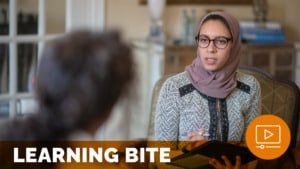Enhancing patient-centered care for limited English proficiency patients through Tell Me More®: A student-driven initiative to explore the patient as a person and develop students’ communication skills

Angela Liu Zucker
School of Medicine at Hofstra/Northwell
Alicia W. Leong
Icahn School of Medicine at Mount Sinai
Alice Fornari
Zucker School of Medicine at Hofstra/Northwell
Taranjeet Kalra Ahuja
Zucker School of Medicine at Hofstra/Northwell
Related content
-
 Patient Family & Community Engagement | Staff & Provider Engagement
Patient Family & Community Engagement | Staff & Provider EngagementUsing Design Thinking Principles to Reduce Healthcare Barriers & Improve Access
This learning bite brings to light the importance of understanding our patients’ barriers in healthcare. Learn how design thinking can be a tool to improve experience. Through the human-centered approach of design thinking, we can integrate the needs of the people into our processes and procedures that create more equitable experiences for those in our
Learn more -
 Patient Family & Community Engagement
Patient Family & Community EngagementDeclining a Qualified Medical Interpreter: Helping Patients Understand the Risks
By Tamara Cardoso, UConn Health At UConn Health, we are committed to putting patient experience at the center of our care. We recognize that delivering safe, high-quality, patient-centered care necessitates effective communication at every interaction. In healthcare, ineffective communication can lead to heightened anxiety, increased stress levels, and potential misunderstandings. Importantly, it can pose significant
Learn more -
 Patient Family & Community Engagement
Patient Family & Community EngagementModernizing Student Volunteering
Do you want to know the secret to creating a vibrant and sustainable volunteer workforce? Faced with challenges from the changing demographics of its volunteers, Tampa General Hospital modernized its volunteer program by focusing on recruiting students. Through customized training designed specifically for youth, TGH has inspired a new generation of volunteers which has created
Learn more
